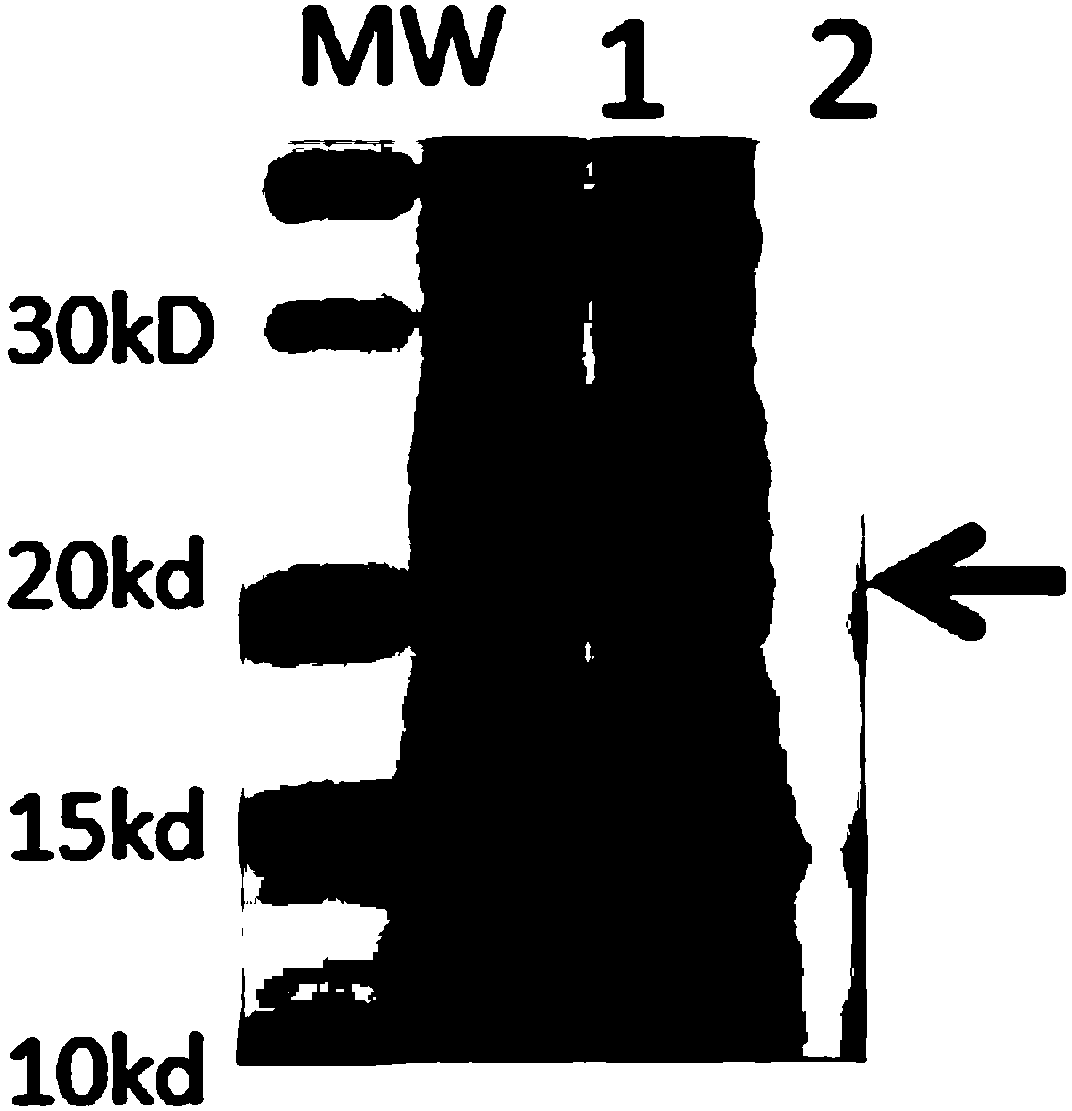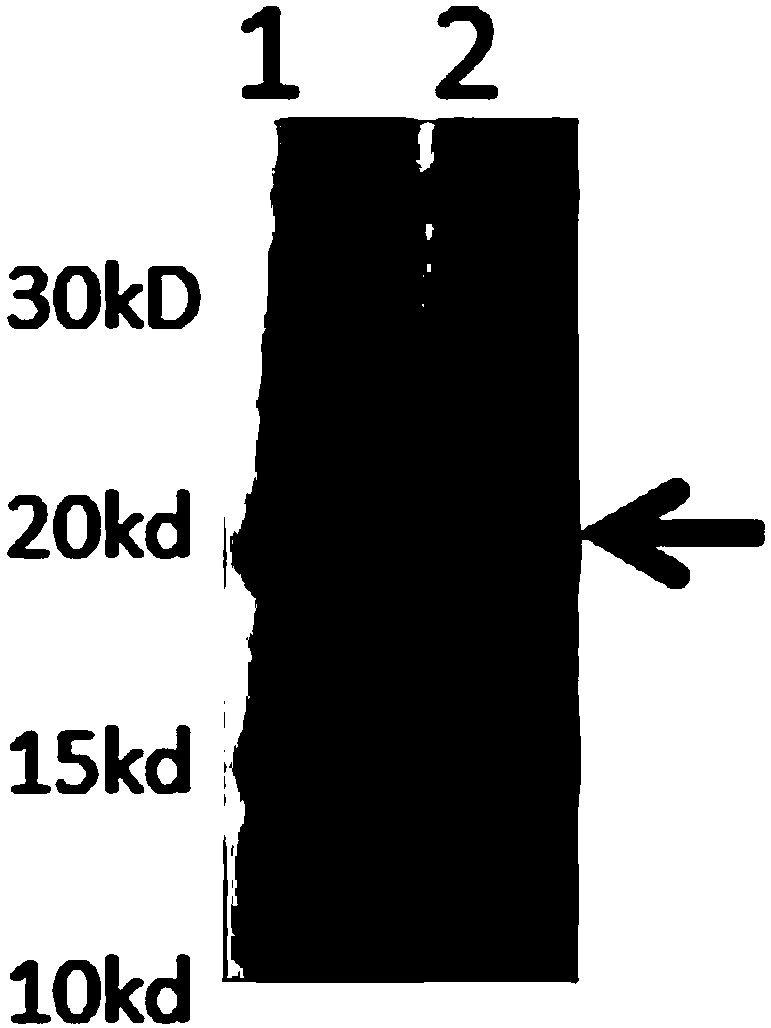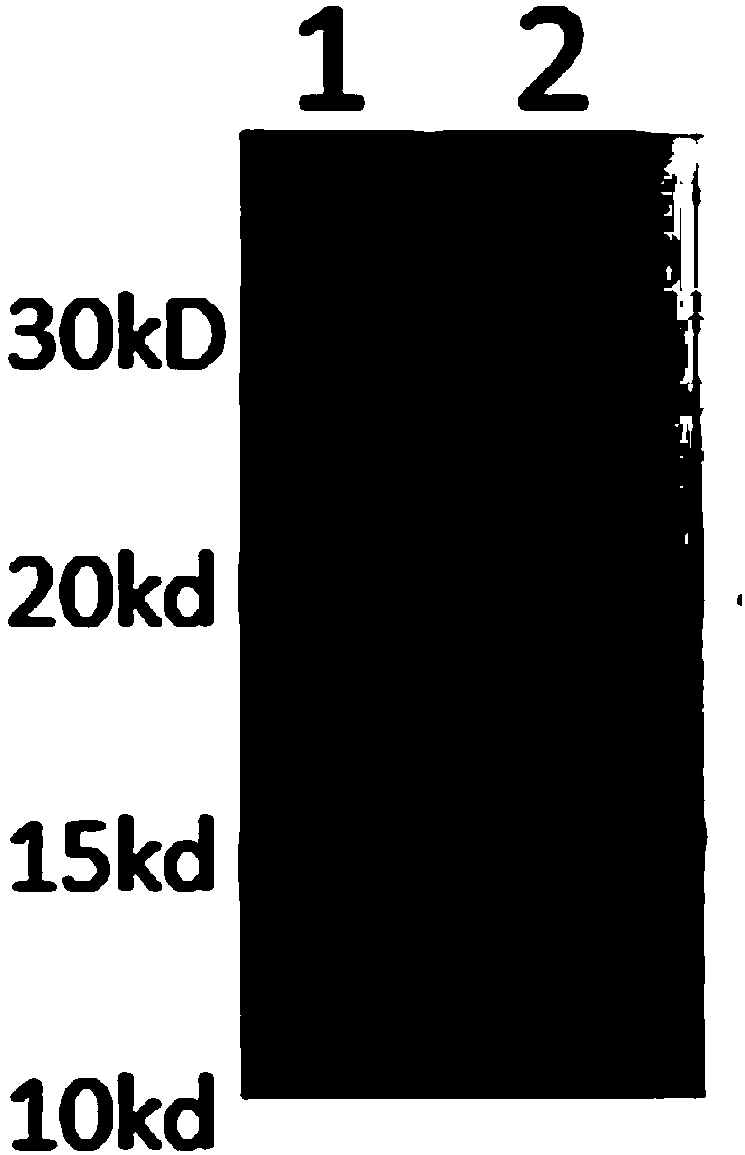Human rotavirus VP8 recombinant protein and human rotavirus vaccine using same
A rotavirus and recombinant protein technology, applied in the field of vaccines, can solve the problem of low immunogenicity of protein fragments
- Summary
- Abstract
- Description
- Claims
- Application Information
AI Technical Summary
Problems solved by technology
Method used
Image
Examples
Embodiment 1
[0051] Screening of foreign polypeptides and fusion proteins
[0052]Tetanus and diphtheria toxins have been used as human vaccines for nearly 100 years. It is safe to use its fragment polypeptides as rotavirus vaccines. By analyzing the primary structure of tetanus toxin and diphtheria toxin protein with SwissInstitute Bioinformatics software (http: / / web.expasy.org / compute_pi / ), 4 polypeptide fragments were screened out (as shown in Table 1). One is from tetanus toxin and three are from diphtheria toxin. These polypeptide fragments contain 1 to 3 negatively charged amino acids (aspartic acid or glutamic acid) and few or no positively charged (arginine and lysine), so the isoelectric point of these polypeptides are very low. In this example, the DT4 polypeptide is used as a control. The sequence of the DT4 polypeptide is Gly Val Leu Leu Pro Thr Ile Pro Gly Lys Leu Asp Val Asn Lys Ser Lys ThrHis Ile, and its isoelectric point is 9.7, which contains three positively charged ...
Embodiment 2
[0073] Construction of expression system and protein purification
[0074] VP8 protein is a non-glycosylated protein, therefore, the E. coli expression system purchased from Merck Mllipore was selected . The plasmid used was pET30a ; host cell E. coli BL21 (DE3). First, the DNA sequences of the above six proteins were codon-optimized, and then their nucleotide sequences were artificially synthesized ( http: / / www.blueheronbio.com / ) and cloned into the pET30a plasmid expression system. Then, the plasmid with the target gene was transformed into BL21(DE3) competent bacteria for antibiotic screening. Confirm that the grown colonies are picked and cultured in shake flasks at 37°C until the turbidity is 1-1.5 (OD600), then the culture temperature is lowered to 20°C, and 2mM IPTG is added to induce expression for 4-6 hours. The cells were then collected, lysed by high pressure (ATS lyser), and centrifuged. Samples were taken before and after centrifugation (sample 1 before ce...
Embodiment 3
[0080] Production of monoclonal antibodies. In this example, monoclonal antibodies were produced by immunizing mice (BALB / c) with VP8P[8] protein. The mice were injected subcutaneously with 20 μg of VP8P[8] adsorbed on 100 μg of aluminum hydroxide 3 times at 7-day intervals. Blood was collected on the 21st day, and high titer of anti-VP8P[8] protein antibody (positive at 1:105 dilution) was found in serum by enzyme-linked immunosorbent assay. The spleen cells of a mouse were fused and cultured with myeloma cells, and 22 monoclonal antibodies were screened by VP8P[8] protein-coated enzyme-linked immunosorbent assay. Then use fluorescent labeling method to further detect whether these monoclonal antibodies can bind to the VP8 protein on the surface of the virus. In a 6-well cell culture dish, on top of a monolayer of grown 100% MA104 cells, approximately 100x CC ID50 of JX406750 virus was added. After 18 hours of incubation at 37 degrees, monoclonal antibody culture medium (1...
PUM
 Login to View More
Login to View More Abstract
Description
Claims
Application Information
 Login to View More
Login to View More - R&D
- Intellectual Property
- Life Sciences
- Materials
- Tech Scout
- Unparalleled Data Quality
- Higher Quality Content
- 60% Fewer Hallucinations
Browse by: Latest US Patents, China's latest patents, Technical Efficacy Thesaurus, Application Domain, Technology Topic, Popular Technical Reports.
© 2025 PatSnap. All rights reserved.Legal|Privacy policy|Modern Slavery Act Transparency Statement|Sitemap|About US| Contact US: help@patsnap.com



